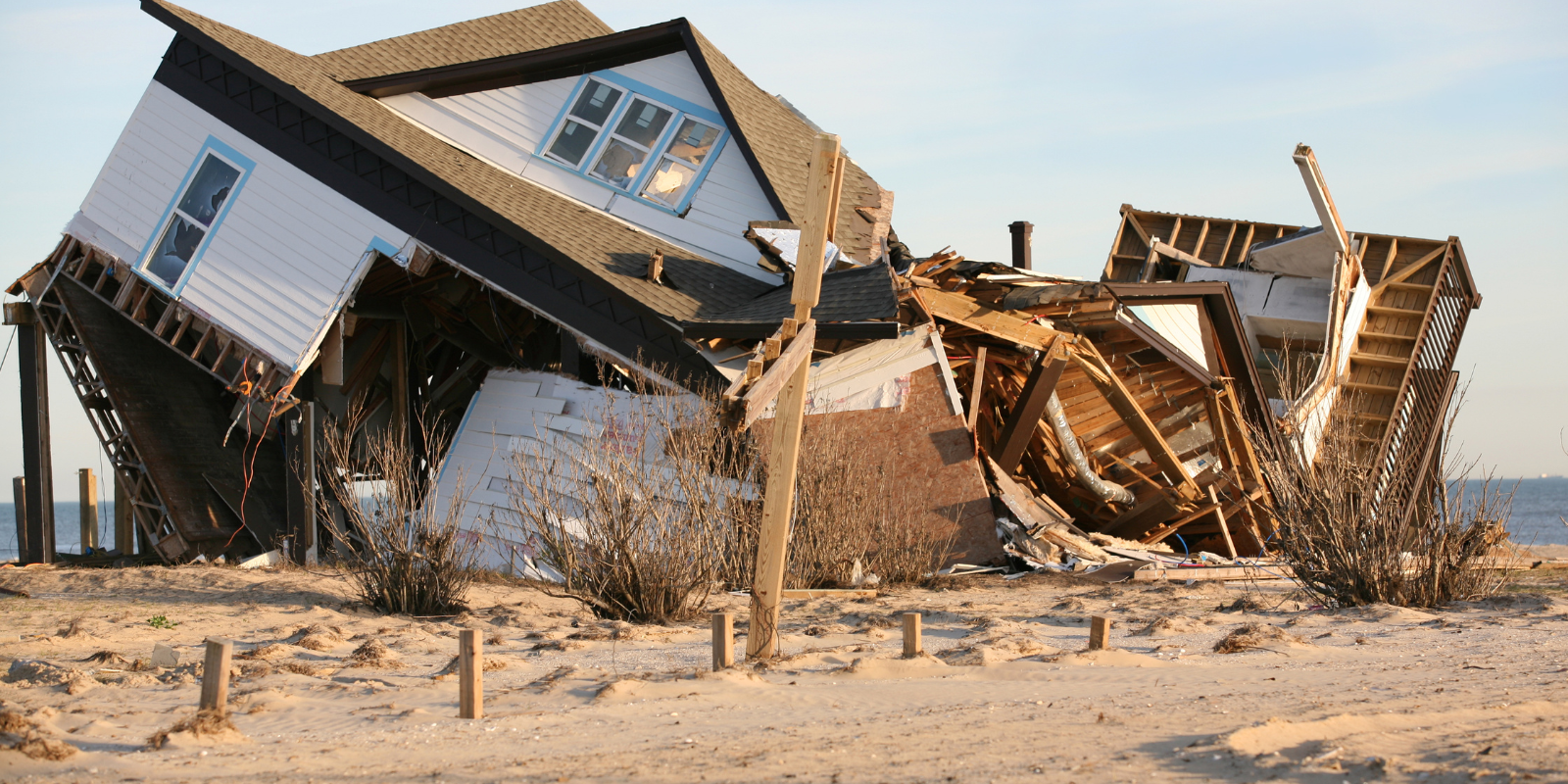
Storm Damage Cleanup: Top Solutions For Storm Damage Restoration
By: 911 Water Damage Experts
Storms can be awe-inspiring natural phenomena, but they also pose significant threats to life, property, and infrastructure.
From hurricanes and tornadoes to thunderstorms and hailstorms, the damage caused by these extreme weather events can be devastating.
However, with proper preparation, preventive measures, and timely cleanup and restoration, homeowners can mitigate the impact of storm damage.
In this article, we will explore essential tips for storm damage prevention, fascinating facts about storm damage, the most destructive types of storms, effective cleanup and restoration solutions, and frequently asked questions regarding storm damage.
Let’s get right into it.
Top 5 Solutions For Storm Damage Cleanup And Restoration:
When the fury of a storm wreaks havoc on homes and landscapes, swift and efficient cleanup and restoration become paramount.
The top 5 solutions for storm damage cleanup and restoration are a testament to human ingenuity and resilience in the face of natural disasters.
Emergency Response Teams: Rapid response is critical in minimizing the extent of storm damage. Dedicated emergency storm cleanup and restoration teams are equipped with specialized tools and training to assess the situation, prioritize tasks, and secure the affected areas. Their quick intervention helps prevent further damage and ensures the safety of occupants.
Debris Removal and Disposal: Storms often leave behind a trail of debris, from fallen trees to scattered building materials. Professional cleanup crews possess the expertise to safely remove and dispose of debris, reducing potential hazards and facilitating the restoration process.
Water Extraction and Drying: Flooding caused by heavy rainfall or overflowing rivers can lead to extensive water damage. Specialized equipment such as pumps, dehumidifiers, and industrial fans are used to extract water and thoroughly dry affected structures. Timely water removal prevents mould growth and structural deterioration.
Structural Repairs: A comprehensive assessment of structural damage is crucial for effective restoration. Experienced contractors can repair damaged roofs, walls, windows, and foundations. Utilizing quality materials and techniques, they ensure that the repaired structures regain their integrity and functionality.
Mould Remediation: The moisture left in the wake of a storm can foster mould growth, posing health risks to occupants and compromising indoor air quality. Mould remediation experts employ advanced techniques to identify and eliminate mould infestations, employing protective gear and specialized cleaning agents to restore a safe living environment.
Interesting Facts About Storm Damage
Lightning’s Power: Each year, lightning strikes cause over $1 billion in damages in the United States alone. Beyond starting fires, lightning can severely damage electrical systems and appliances in buildings.
Impact of Hailstorms: Hailstorms can unleash significant destruction, with hailstones as small as a dime causing damage to roofs and vehicles. The largest hailstone ever recorded had a diameter of 8 inches and weighed a staggering 2.25 pounds.
Tornado Intensity: The Enhanced Fujita (EF) scale measures the intensity of tornadoes, ranging from EF0 (weakest) to EF5 (strongest). An EF5 tornado can have wind speeds exceeding 200 mph, capable of wiping out entire neighborhoods.
Storm Surge Danger: Storm surges, often accompanying hurricanes, can be extremely hazardous. The highest storm surge ever recorded occurred during the 1970 Bhola cyclone in Bangladesh, reaching an astonishing height of 33 feet.
Hurricane Naming Convention: Since the 1950s, hurricanes have been given human names to facilitate communication and public awareness. The World Meteorological Organization maintains six lists of names, rotating them every six years.
Top 4 Types Of Storms That Cause The Most Damage:
Hurricanes: These large and powerful tropical storms can cause immense destruction through high winds, storm surges, and heavy rainfall, leading to flooding and landslides.
Tornadoes: Forming from thunderstorms, tornadoes are characterized by their rotating funnels and can obliterate structures in their path with their fierce winds.
Thunderstorms: Thunderstorms can bring lightning strikes, hail, and heavy rainfall. Flash floods caused by intense downpours are a common threat during severe thunderstorms.
Hailstorms: Hailstorms can lead to significant damage to vehicles, buildings, and crops, especially in regions with frequent occurrences.
Top 10 FAQs And Answers About Storm Damage:
Q: Can I prevent all storm damage to my property? A: While you can’t eliminate all risks, proper preventive measures can significantly reduce potential damage.
Q: What are some common storm damage prevention tips? A: Secure loose objects outdoors, trim trees near your home, install storm shutters, and reinforce your roof.
Q: Does insurance cover storm damage? A: Standard homeowner’s insurance typically covers storm damage, but coverage may vary depending on the policy and specific circumstances.
Q: How long does storm damage restoration take? A: The timeline for restoration depends on the extent of the damage. It can range from a few days to several weeks.
Q: What should I do if a tree falls on my property during a storm? A: First, ensure everyone’s safety, then contact a professional tree removal service to safely remove the tree.
Q: How can I protect my electronics during a thunderstorm? A: Unplug sensitive electronics or use surge protectors to safeguard them from power surges.
Q: What’s the difference between a tornado watch and warning? A: A tornado watch means conditions are favorable for tornadoes, while a tornado warning indicates a tornado has been sighted or detected by radar.
Q: Should I repair storm damage myself? A: It’s best to leave storm damage repairs to professionals, as they have the expertise and safety equipment.
Q: Can hail damage be hidden and worsen over time? A: Yes, some hail damage may not be immediately visible, leading to long-term problems if left unaddressed.
Q: How can I prepare for a hurricane? A: Create an emergency kit, secure your home’s windows and doors, and follow evacuation orders if necessary.
Conclusion
Storm damage is a formidable force of nature, but with a proactive approach, homeowners can mitigate its impact and protect their properties.
By implementing preventive measures, understanding the various types of storms and their potential damages, and seeking professional cleanup and restoration services, individuals can be better prepared to face the challenges posed by extreme weather events.
Remember, safety should always be the top priority during and after a storm, and seeking professional assistance is crucial for a successful recovery.
If you have any questions about our article, “Storm Damage Cleanup: Top Solutions For Storm Damage Restoration” or need storm restoration services feel free to call us at 1-833-WE-DRY-IT any time 24/7/365 or chat with us on LiveChat or social media.
Related Posts
Mould Removal Restoration Articles
5 Signs You Have Mould Growing In Your Walls
“Can I Remove Mould Myself?” Our Mould Removal Experts Have Answers
7 Must-Know Reasons Why You Should Get A Mould Inspection Before Buying A House
Does Mould Attract Bugs? Yes And Here’s What Kind And Why
How To Remove Mould From The Attic [Mould Prevention Tips Inside]
How Rain Causes Mould Growth-Prevention Tips Included
Must-Know Tips: How To Remove Mould In Your Basement
Water Damage Restoration Articles
How to prevent home storm damage
What you can expect from a fire damage restoration company
Water damage prevention tips from the most common problems we’ve seen
Top causes of water damage in commercial buildings and how to find them
Must-know water damage tips: What to do after your house floods
What does good water damage restoration look like?
DIY water damage restoration and the hidden dangers
How to choose the right water damage company
Flast floods: What to do before, during and after a flash flood
What to do when your attic leaks?
Fire Damage Restoration Articles
Fire prevention tips for the summer
How to clean up after a house fire
Fire damage restoration checklist
Fire damage tips: 6 hazards property owners miss
How smoke from fires can negatively affect your health
What are the most common causes of house fires?
10 helpful smoke damage cleaning tips
Related Water Damage Services
Fire damage restoration services
Water damage restoration services
Emergency cleanup services
Mould removal services
Weather damage services

